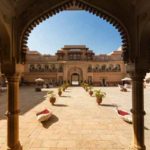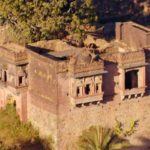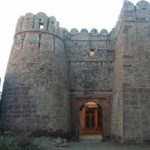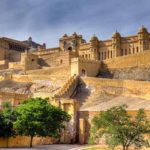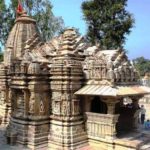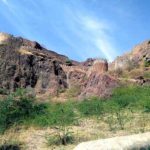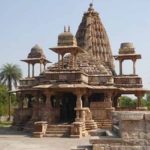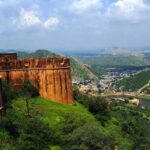Jalore Fort is the main attraction of Jalore, a town about 45 kms away from the resort ,one of the nine castles of the Maru, under the Paramaras in the 10th century. It is one of the most famous and impressive forts in the state and has been known through history as the Sonagir or the “golden mount”. The precise year of its construction is not known. However, it is believed to be have been built between the 8th and the 10th centuries. The fort has four gigantic gates.The fort is built on the lines of traditional Hindu architecture.
Built into the front wall are four mighty gates or pols that lead into the fort: The Suraj Pol, Dhruv Pol, Chand Pol and the Sire Pol. The Suraj Pol or the “Sun gate” is built so that the first rays of the morning sun enter through this gateway. It is an impressive gate with a small watch tower built over it. The Dhruv Pol is rather simple looking compared to Suraj Pol Rajasthan Monuments.
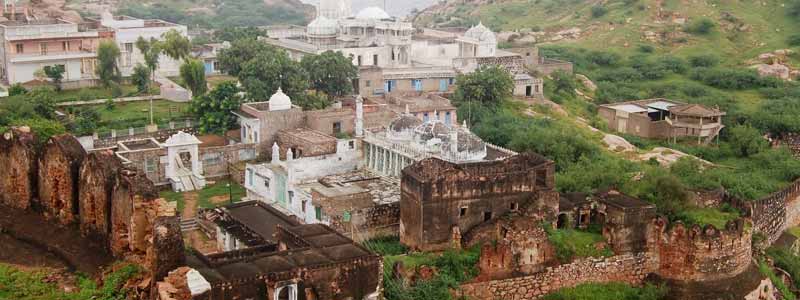
Interesting Facts of Jalore Fort
- When Ala Ud Din Khilji attacked the Jalore Fort and many of the Rajput soldiers attained Martyrdom, their wives burned themselves to death by jumping into a pond of burning fire, so as to save their honors from opposing army. This was a popular tradition of highest sacrifice amongst Rajput women and known as “Jauhar”.
- The main attraction of the fort is the desolated (by Ala Ud Din Khilji) Residential Palace here, which now is left with ruined symmetrical walls with huge rock formations around it.
- From Hindu temples to Mosques to the Jain temples, representing the holy places of different rulers of this place, you will find all of them inside the Jalore Fort’s complex.
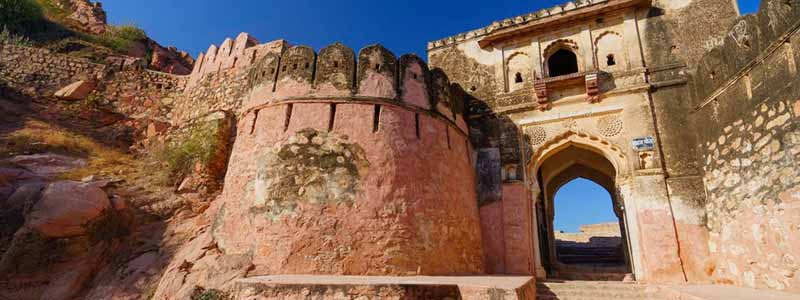
History
The precise year of its construction is not known however it is believed to be built between the 8th and 10th centuries.
Jalore was ruled by the Parmar, a Rajput clan in the 10th century. Kirtipala, the youngest son of Alhana, ruler of Nadol, is the founder of the Jalore line of Chauhans. He captured it from the Paramaras in 1181 and took the clan name Songara after the place. His son, Samarsimha, succeeded him in 1182. After him, Udayasimha became the ruler. The rule of Udayasimha was a golden period in the history of Jalore. He was a powerful and able ruler . He ruled over a large area. He captured back Nadol and Mandore from the Muslims. In 1228 Iltutmish circled Jalore however Udayasimha offered stiff resistance. He was succeeded by Chachigadeva and Samarasimha respectively. After Samantasimha his son Kanhadadeva became ruler of Jalore.
During the reign of Kanhad Dev Songara Jalore was attacked and destroyed in 1311 by Ala ud din Khilji, Sultan of Delhi. Kanhad Dev Songara and his son Viramdeo Songara died defending and many women performed jauhar.
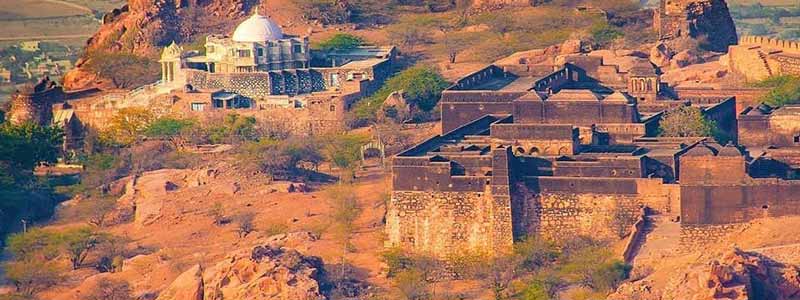
The Attractions inside the Fort
The mahal or “the residential palace” inside the fort is now desolated, and what is left of it are the ruined symmetrical walls with huge rock formations around it. The cut-stone walls of the fort are still intact at many places. There are some drinking water tanks in the fort.
The Fort Mosques The Kila Masjid (Fort Mosque) within the fort is also noteworthy as they demonstrates the widespread influence of the architectural decorations associated with the Gujarati styles of the period (i.e. late 16th century).
Another shrine in the fort is that of Saint Rehmad Ali Baba. Near the main gate there is the tomb of Malik Shahdisambiguation needed, a noted Mohammedan saint.
The Jain Temples Jalore is also a place of pilgrimage for Jains and the famous Jain temples of Adinath, Mahavira, Parshvnath and Shantinath are located here.
The oldest temple is that of Adinath, which existed as far back as in the 8th century. The mandapa was subsequently built in 1182 A.D. by Yasovira, a Srimali vaishya. The temple stands out the most among the dark fort walls and rocky surrounding . Built in white marble this imposing structure is quite a sight Jalore fort.
The temple of Parsvanath was built by the ruler of Jalore fort and then rebuilt in 1785 A.D. This temple has a spectacular toran or an archway and a golden “cupola’ in the hall meant for theatre performances. Built near the Bal Pol, which is situated north west of the fort.
The temple of Mahavira was also known as Chandanavihara Nahadarao, named after a Pratihara ruler and a hero of Jain tradition who built it in the 14th century.
The temples of Santinatha and the Ashtapads are believed to have existed in the 13th century.
Hindu Temples There is an old Shiva temple, a temple devoted to Lord Shiva. It was built by Kanhaddev Ruler of Jalore. Same was renovated by Mah Singh Ruler of Jodhpur and built a Samadhi Mandir of Shri Jalandharnath. Recently this temple renovated again by Holy Shri Santinathji Maharaj in 2005 with all facility for dovotees. A triple temple dedicated to Amba mata, Ashapuri and Hanuman (the monkey god) is also located within the fort premises.
HOW TO REACH ?
By Air :Jalore does not have an airport. Nearest airport is Jodhpur Airport.
By Road :There are no bus routes from other major cities to Jalore. Nearest bus stand is Bhinmal.
By Rail :You can easily get regular trains to Jalore from other major cities of the country.

